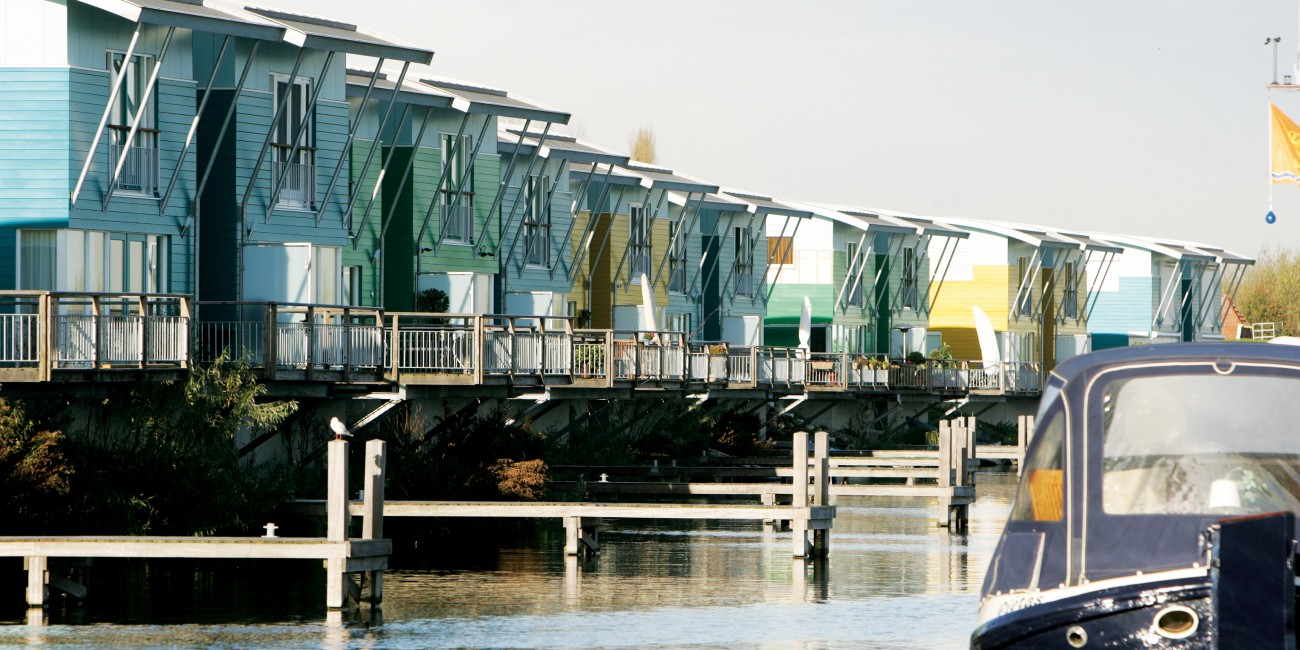Definition
Amphibious buildings lie on the ground out of flood periods and are likely to float when the water level rises during flood. They do not therefore float permanently unlike the floating buildings which can be found in many countries in urban areas along lakes or slow-flowing rivers. The principle is to erect the building structure on a float. When moving vertically with water level variations, these floats are guided by vertical posts to avoid the drift of the amphibious building. Flexible piping allows energy/water feeding and waste drainage.(Vojinovic Z., 2015, p. 124)
Co-benefits and impacts
Amphibious buildings can demonstrate excellent resilience capacity as water does not penetrate the building.Definition (GR)
Τα αμφίβια κτίρια κείτονται στο έδαφος σε περιόδους που δεν εμφανίζεται πλημμύρα και είναι πιθανό να επιπλέουν όταν η στάθμη του νερού αυξάνεται κατά τη διάρκεια της πλημμύρας. Επομένως, δεν επιπλέουν μόνιμα σε αντίθεση με τα πλωτά κτίρια που μπορούν βρίσκονται σε πολλές χώρες σε αστικές περιοχές κατά μήκος λιμνών ή ποταμών αργής ροής. Η αρχή είναι η ανέγερση της δομής του κτιρίου σε πλωτήρα. Όταν κινούνται κατακόρυφα με διακυμάνσεις της στάθμης του νερού, αυτοί οι πλωτήρες καθοδηγούνται από κάθετους στύλους για να αποφευχθεί η μετατόπιση του αμφίβιου κτηρίου. Οι εύκαμπτες σωληνώσεις επιτρέπουν την τροφοδοσία ενέργειας/νερού και την αποστράγγιση αποβλήτων.(Vojinovic Z., 2015, p. 124)
Co-benefits and impacts (GR)
Τα αμφίβια κτίρια μπορούν να επιδείξουν εξαιρετική ικανότητα ανθεκτικότητας καθώς το νερό δεν διεισδύει στο κτίριο.Problem types
Problem types for which this measure can be applied.
Case study
Last modified: May 13, 2020, 9:21 p.m.


 Ελληνικά
Ελληνικά
